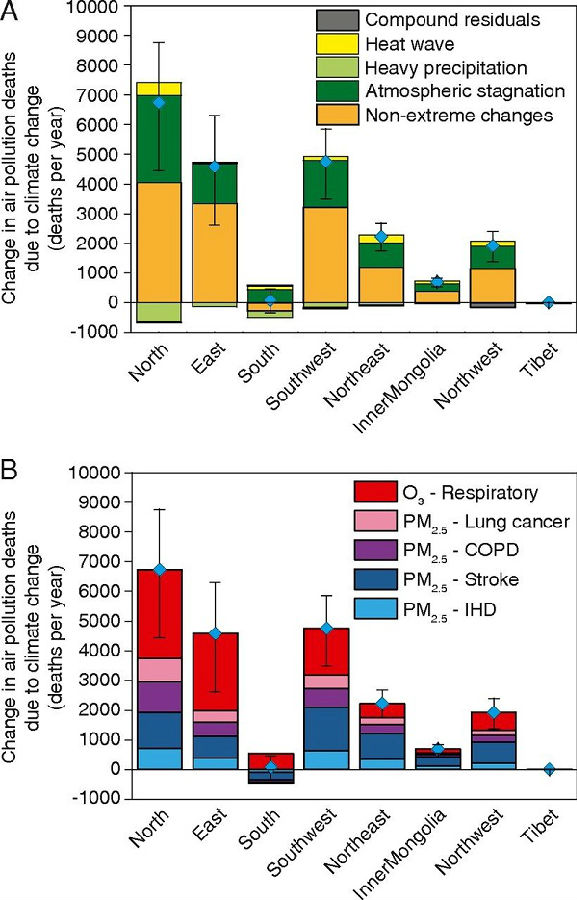On August 12th, Professor Zhang Qiang from the Department of Earth System Science at Tsinghua University, published a paper entitled "Impacts of climate change on future air quality and human health in China" in the Proceedings of the National Academy of Sciences (PNAS).The paper reveals the impact of climate change on fine particulate matter (PM2.5) and ozone pollution in China.
In recent years, air pollution has caused more than 1 million deaths per year in China, making it a major focus of public health efforts. However, future climate change may exacerbate such human health impacts by increasing the frequency and duration of weather conditions that enhance air pollution exposure.
To quantify the impact of climate change on future air qualities, the research group led by Prof. Zhang Qiang use a combination of climate, air quality, and epidemiological models to assess future air pollution deaths in a changing climate under Representative Concentration Pathway 4.5 (RCP4.5). The research group finds that, assuming pollution emissions and population are held constant at current levels, climate change would adversely affect future air quality for >85% of China’s population (~55% of land area) by the middle of the century, and would increase by 3% and 4% the population-weighted average concentrations of fine particulate matter (PM2.5) and ozone, respectively. As a result, we estimate an additional 12,100 and 8,900 Chinese will die per year from PM2.5 and ozone exposure, respectively.
The important underlying climate mechanisms are changes in extreme conditions such as atmospheric stagnation and heat waves (contributing 39% and 6%, respectively, to the increase in mortality). Additionally, greater vulnerability of China’s aging population will further increase the estimated deaths from PM2.5 and ozone in 2050 by factors of 1 and 3, respectively. Our results indicate that climate change and more intense extremes are likely to increase the risk of severe pollution events in China. Managing air quality in China in a changing climate will thus become more challenging. In the future, China should strengthen the coordinated management of air pollution and climate change, and achieve a win-win situation of mitigating climate change and improving air quality.

Health effects PM2.5 and ozone concentrations in China by 2050 in RCP4.5 scenario
Professor Zhang Qiang from the Department of Geosciences of Tsinghua University and Professor Hans Joachim Schellnhuber of the Potsdam Climate Impact Research Center in Germany are both corresponding authors of the paper. Professor Zhang Qiang’s PhD student Hong Chaopeng (now a postdoctoral fellow at the University of California, Irvine) is the first author of the paper. The other co-authors of the paper are Professor Zhang Yang of North Carolina State University, Professor of Steven Davis of the University of California, Irvine, Professor Guan Dabo, Professor Liu Zhu, and Professor He Kebin of the School of Earth Science. The research was supported by the National Key Research and Development Program and the Chinese Natural Science Foundation.
fulltext link:https://www.pnas.org/content/early/2019/08/06/1812881116